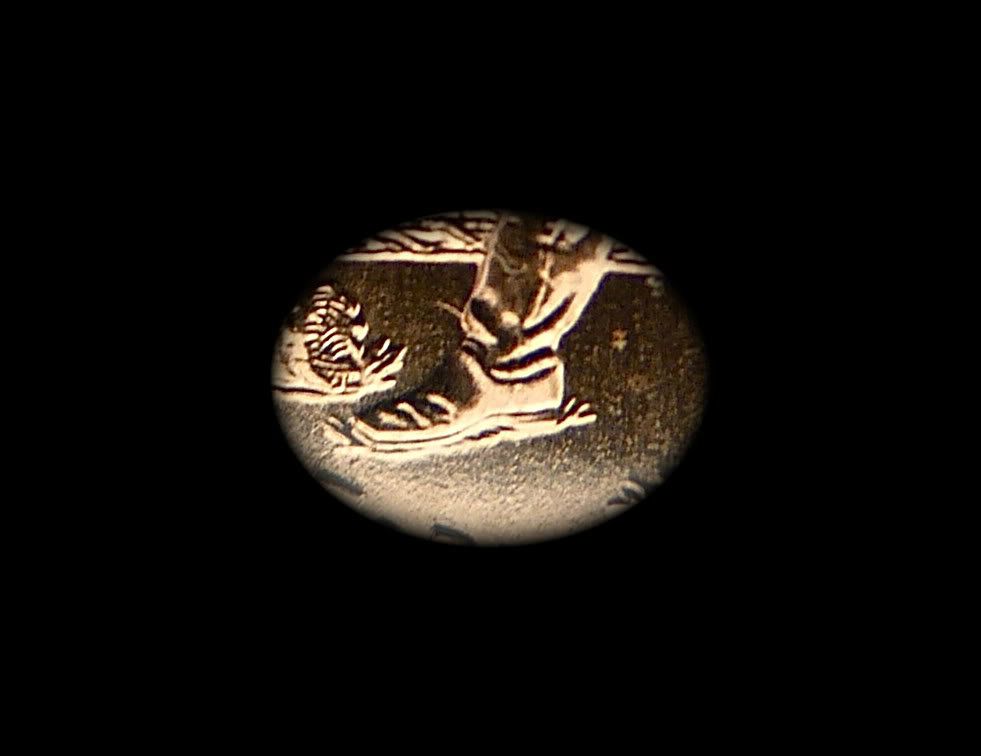Want to share a new double die discovery...warning 2009p formative cent
 Onedollarnohollar
Posts: 2,035 ✭✭✭✭
Onedollarnohollar
Posts: 2,035 ✭✭✭✭



I know, another double die from the formative Lincoln cents. So many errors, so miniscule some of them, that you need a Hubble telescope to see them. Well, in the face of all of that, I submit my new
discovery. I haven't submitted to either Wexler or Coneca for the simple fact that it's something I'm not sure is necessary. Acknowedgement here on this forum is just as valid an attribution as any for me.
Anyway, who needs to add to the hundred plus already attributed? Well, take a look at this one. I'm calling it the "extra blade of grass" variety. I tried to hilight it in my pics. If you look about mid-boot, on
the left hand side facing toward the mallet, you'll see a distinctive raised metal line that extends about 1/8th" and has a flow like a tall piece of grass, slightly curving at the top. I have found these in only one
particular date of the mint issued sets so it's pretty rare I believe. Now what caused it is anyone's guess...an extra finger?, a damaged die by another mint employee?, chime in with your thoughts but it is
definately not part of the original design (I've looked at thousands of these) Well, that's all for now...anxiously awaiting the feedback (bracing myself)
0
Comments
BST Transactions: DonnyJf, MrOrganic, Justanothercoinaddict, Fivecents, Slq, Jdimmick,
Robb, Tee135, Ibzman350, Mercfan, Outhaul, Erickso1, Cugamongacoins, Indiananationals, Wayne Herndon
Negative BST Transactions:
...some of us could use an arrow pointing to the doubling you are referring to. a few of us aren't as savvy and observant as most, therefore we need assistance.
Normal boot
Extra blade of grass projecting from mid-boot toward the mallet
It is definately NOT a die crack but it could be a slight scratch on the die itself that allowed extra metal to be raised on the surface much like the extra leaf Wisconsins. Hopefully the side by side comparison of normal die vs. this one shows it clearly. It looks like it belongs in the design and every one that I have found have a very consistent mark in length and width. If it were a die scratch wouldn't the mark be "dug" into the coin instead of "raised" like the rest of the design is? I'll try to get better photos tomorrow if you can't see the difference clearly enough, but hopefully this at least clarifies what it is that I have found.
edited to add: if you look closely at the "blade of grass" it has a shadow behind it that demonstrates that it is a raised mark
<< <i>Could be a crack, probably a clash, most certainly not a big deal to the general public. >>
Coin collecting in general is not a big deal to the general public.
hundreds if not thousands of die cracks before and this isn't one to my eye) Isn't a die clash going to show an imprint in the metal? (I think I know what a die clash looks like but perhaps I need edification)
These pics probably aren't definitive enough to make my point but this anomaly again is raised metal, throws a shadow in the pic to illustrate that it is raised much like the extra thumb, finger, etc. but protruding
from the boot as I've attempted to show. I do defer to the experts on the panel if I'm missing something. It is true that this is probably much ado about nothing in the grand scheme of coin collecting. This series,
along with it's multitudes of errors, doesn't rank way up there with the numismatic holy grails. I just thought it was interesting and wanted to share this minor discovery. Obviously I should probably send it off to Mr.
Wexler for attribution to legitimize the find, but hopefully he reads these boards and may already have one in his possession that he can make comment on. Anyway, thanks for all of the input thus far and I look
forward to reading any other opinions on the subject and the mystery behind this particular "error". How were the "extra leaf" Wisconsins made? Is it possible that this was an intentional scratch put on the die
to make this anomaly?
p.s. double spaced in honor of Bear